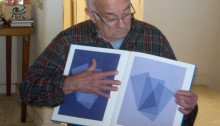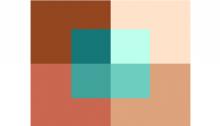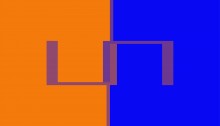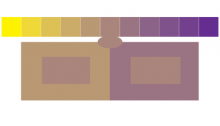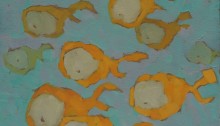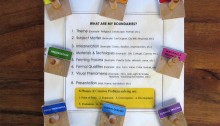Color Relationships 2, 2015 week 1
The first session of the Winter 2015 Color Relationships class was held on Friday, January 9. This series of lessons will address the visual phenomena of films, veils, volume color, white light, and colored light. We will explore how we perceive these phenomena, and what strategies we must develop in order to recreate them in our media. We reviewed concepts of arrays and halation that were fundamental to Color Relationships 1, held in the fall of 2014. Then the class was challenged to create an illusion of a black film, using only swatches of opaque gray. The solution was given and discussed, and a new challenge assigned for homework: Create the illusion of a colored film over two or more colors.
